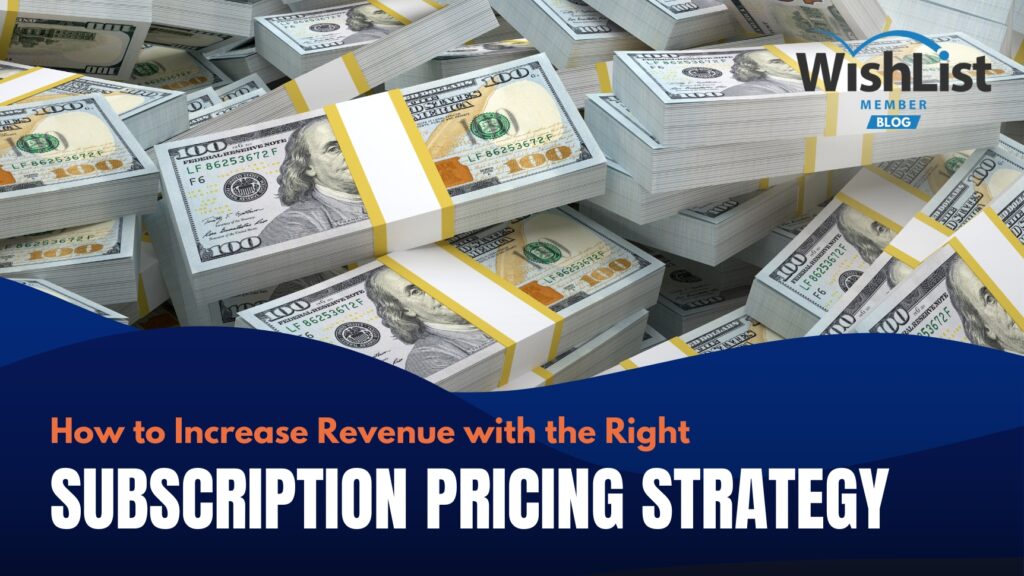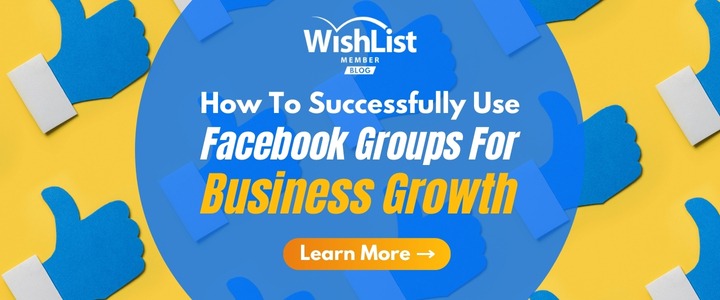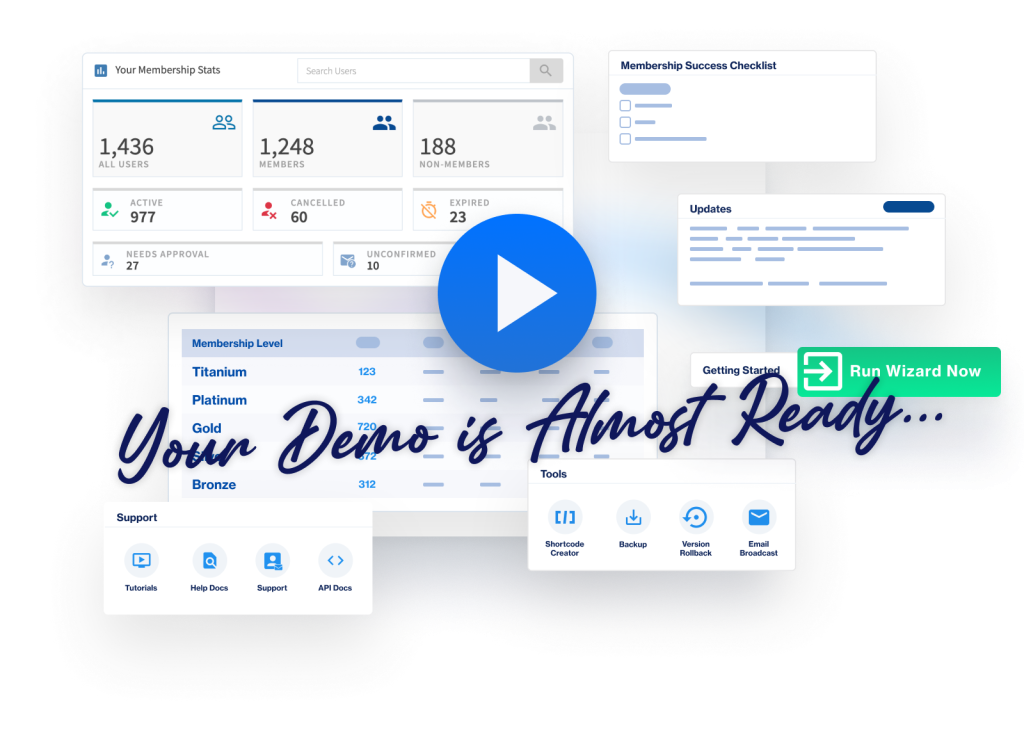Discover the best subscription pricing strategy for your WordPress site. Explore effective tactics you can experiment with in your membership site.
Mastering the art of setting the best subscription pricing strategy is crucial to you're membership site's growth and long-term financial success.
Contents
What works for one business might not necessarily work for another.
Whether your business is in its early stages or you're looking to inject new life into your existing operation, we've designed this comprehensive guide to provide you with practical insights and help you navigate through the ins and outs of various subscription pricing strategies.
In the following segments, we will delve into the various subscription pricing strategies, examine their pros and cons, and identify the type of business they're best suited for.
Ready? Let's go!
How Do Subscription Pricing Strategies Benefit Your Membership Site?
Strategic subscription pricing can add significant value to your membership site. With the right strategy for you business, you can not only benefit your bottom line but also enhance the overall user experience of your site.
In this section, we will look at the numerous benefits that subscription models bring to membership sites.
From providing a reliable revenue stream, to fostering customer loyalty and delivering data-driven insights, subscription pricing strategies are the key to creating thriving, sustainable, and customer-centric online communities.
Let's explore how these strategies empower membership site owners to build stronger relationships with their audience while ensuring financial stability and growth.
Here are some key advantages:
- Steady Revenue Stream: Subscription models provide a predictable and recurring revenue stream for your business. You can forecast your income more accurately, making financial planning easier.
- Improved Cash Flow: Regular subscription payments mean a consistent influx of cash, which can help you manage expenses, invest in growth, and maintain stability.
- Customer Loyalty: Subscribers are often more committed and loyal to your brand because they have an ongoing relationship with your site. They're less likely to churn or switch to competitors.
- Enhanced Customer Lifetime Value: Subscribers contribute revenue over a longer period, increasing their overall lifetime value to your business compared to one-time purchasers.
- Lower Customer Acquisition Costs: It's generally more cost-effective to retain existing subscribers than to acquire new customers. Subscription models can reduce your customer acquisition costs over time.
- Data Insights: Subscription models provide valuable data on customer behavior and preferences, helping you tailor your content or offerings to better meet their needs.
- Content Consistency: Knowing you have a subscriber base can encourage you to consistently deliver high-quality content or services, which is essential for retaining subscribers.
- Upselling Opportunities: Subscription models often allow you to upsell premium or additional features to existing subscribers, increasing their value to your business.
- Cross-Selling: You can cross-sell related products, services, or add-ons to your subscriber base, increasing your overall revenue per customer.
- Community Building: Subscribers may become part of an exclusive community or forum, fostering engagement and a sense of belonging.
- Flexibility in Pricing: Subscription models offer flexibility in setting different price tiers, allowing you to cater to various customer segments and budgets.
- Content Monetization: Subscription models enable you to monetize your valuable content continually, rather than relying on one-time sales.
- Competitive Advantage: Offering subscriptions can set you apart from competitors who may rely solely on one-time purchases.
- Feedback Loop: Subscribers can provide valuable feedback, allowing you to make improvements and adjustments based on their input.
- Scalability: As your subscriber base grows, your revenue scales with it, providing room for business expansion and investment in more resources.
- Long-Term Relationships: Subscription models foster long-term relationships with customers, leading to a sense of trust and reliability.
- Market Stability: During economic downturns, subscription-based businesses may experience more stability as customers prioritize essential subscriptions.
- Diversified Income Sources: By offering different subscription tiers or plans, you can diversify your income sources and reduce reliance on any single product or service.
These benefits make subscription pricing strategies an attractive option for membership sites looking to build sustainable and profitable businesses.
How to Use Subscription Pricing Models to Raise Revenue
Alright, let's talk about one of the most exciting parts of running a membership site: making money. There are some clever ways to turn your site into a revenue-generating machine without scaring off your members.
Subscription models and pricing strategies are key to making your membership site both appealing and profitable.
Subscription Models
Alright, let's run through each subscription pricing model so you can take your pick of the best for your business
1. Tiered Membership Levels
Tiered Pricing is your go-to strategy if you want to offer your subscription at different price levels, like basic, intermediate, or premium.
When It Shines
With tiered pricing, you're all about inclusivity! Include something for everyone – from budget-conscious customers to those who want it all.
It also allows for members to upgrade or downgrade whenever they feel like it. That kind of flexibility can keep them coming back for more!
You can upsell services as your customers' needs grow, and you get to play detective by figuring out what they love most. Plus, think of this as an added benefit to inspire customer loyalty, because they'll feel like they're getting a personalized experience tailored just for them.
The Catch
Of course, this comes with its own challenges. Having multiple tiers means more work and costs in creating and maintaining them. If you don't clearly explain the differences between each tier. This can sometimes lead to analysis paralysis for your customers.
And, there's a fine line – offering lower-cost options might unintentionally make your premium ones seem less attractive.
- Pro-Tip: Create distinct levels of membership, such as Basic, Premium, and VIP. Each level should offer increasingly valuable content or perks. Clearly define what each tier offers.
Regularly review and update the perks of each tier based on member feedback to ensure they remain attractive and relevant. - Best For: Perfect for businesses with a range of offerings where you can slice and dice the benefits into different packages.
Flat Rate Subscription Model: Keeping it Simple!
It's pretty straightforward. A flat rate subscription charge is a pre-set cost that a customer pays for a particular product or service. This pricing model suggests simplicity and transparency. No complex calculations or hidden costs here!
When It Shines
What's great about this? It's predictable for you and your customers. Customers love the simplicity, and you love the predictable, recurring revenue.
The flat rate subscription model is fantastic for businesses that provide a standardized service, and it's especially great when you want your customers to enjoy everything you offer without the hassle of choosing between different tiers.
The Catch
While simplicity is a strength, it can also be a limitation.
This model may not work if your offerings require a high degree of personalization or if you have multiple tiers of service. And, you've got to be careful with your pricing.
Set it too high, and you risk scaring away potential customers; set it too low, and you might leave money on the table. So, it's essential to strike that sweet spot and ensure that your flat rate truly reflects the value you provide.
- Pro-tip: Regularly assess your pricing to ensure it aligns with the perceived value and market competition. Additionally, consider offering introductory discounts to attract new subscribers and monitor customer feedback to make continuous improvements.
- Best for: The flat rate subscription model works best for businesses that offer standardized services or products where personalization is not a primary concern. It's particularly suitable for businesses aiming to provide a straightforward, all-inclusive experience to their customers.
2. Freemium Models: Free Meets Premium
With freemium models, you offer basic features and services for free, while more advanced features come at a cost.
This pricing strategy tends to resonate with users as it removes the monetary barrier to entry and allows potential customers to test your product without any initial investment.
When It Shines
People love free stuff, and this strategy lets them try your product without opening their wallets. If they like what they see, they might just stick around and pay for a premium version.
This “try before you buy” method can lead to a high conversion rate and a fan club of loyal customers.
The Catch
Used incorrectly, you might end up devaluing your product in the minds of your customers. Make sure you don't give away too much of the good stuff.
- Pro-Tip: To make the most of the freemium model, optimize conversion points within your free content or service. In other words, identify the key moments where users can seamlessly transition to the premium offering.
For example, if you offer a free software with premium features, strategically place prompts or calls-to-action (CTAs) within the free version, highlighting the benefits of upgrading.
Provide a clear pathway for users to access premium features with a simple click or tap. Additionally, consider using time-limited trials of premium features within the free version to let users experience the added value.
By strategically guiding users toward the premium experience within your freemium offering, you increase the chances of conversion and revenue growth. - Best For: It's a winner for attracting new users. Membership sites that can divide their product into free and premium parts, especially those with a sizable user base will also gel well with this subscription model.
Your aim is to entice users with a taste and then giving them the whole feast when they're ready to dine!
3. Pay-Per-Content: A La Carte Delight!

So, here's the scoop: with pay-per-content, you charge for individual pieces of high-value content, like special courses or exclusive webinars. Your members have the option to pick out and “build” their subscriptions with their preferred or favorite content.
When It Shines
This strategy is a great option if you cater to a broad audience that spans several niche topics or interests. It allows people to sign up for the content that's most relevant to them, ensuring they don't feel short-changed by receiving content that doesn't align with their interests.
Consider a platform offering in-depth market research reports and competitive intelligence documents aimed at investors and consultants who require detailed insights to inform strategic decisions.
Their members are likely to be interested in different markets and regions at different times, without needing continuous access to a wide range of content.
With the pay-per-content pricing model, they have the flexibility to select precisely the reports that meet their current needs. This “pick and mix” approach they can maximize the value and relevance of their purchases by choosing content that supports their immediate decision-making processes.
The Catch
You've got to be strategic with your offerings. You can't throw every offer out for your members.
Offering numerous pieces of content for separate purchase can overwhelm customers with choices. They may struggle to find relevant content, leading to decision fatigue.
People might not know where to start! So, bundle related content at a slightly reduced price to make them want to order more.
- Pro-Tip: Pay-per-content helps maximize the value of your premium offerings. Here's some ways to make this pricing strategy work effectively for your membership site:
- upsell path to convert one-time buyers into recurring subscribers, emphasizing cost savings and convenience.
- Gather customer feedback on purchased content to refine your content strategy and create more of what your audience values.
- Analyze pricing strategies regularly, experimenting with different price points to find the right balance of perceived value and profitability.
- Best For: This strategy works wonders for businesses that want to create a sense of exclusivity and commitment among their members. Whether you're running a cooking club, a fitness community, or an online learning platform, the initial joining fee plus subscription model can make your members feel like they're part of something truly special.
4. Per User Pricing
Per user pricing, also known as “seat-based pricing”, is where you set the subscription cost based on how many users or seats are using it. Per user pricing is often seen in B2B businesses.
When It Shines
As mentioned, this strategy is a superstar for B2B businesses, especially on SaaS platforms. The more users, the merrier!
Think of this as a growth booster! 🚀 As your customers' businesses and teams expand, their reliance on your product grows too. That means more users, more value, and, of course, more revenue coming your way. It's win-win for everyone!
The per user pricing model also brings in a steady stream of recurring revenue for businesses.
It offers a steady income stream because the pricing is linked to the number of users, not how much they use it.
This pricing strategy is also a model in efficiency. When the price depends on the number of users, there's less chance of overusing or underusing your product.
The Catch
Charging per user might make some clients tighten their belts. They could limit the number of users to save costs, which could potentially shrink your party down to a smaller, more exclusive gathering.
Remember, it's all about finding the right balance between fun and affordability. So, whether you're rocking per user pricing or another strategy, keep the energy high and the value even higher! 🌟💪
- Pro-Tip: Consider offering bundled user licenses as a cost-saving option for your customers. Instead of charging a separate fee for each individual user, create packages that include multiple user licenses at a discounted rate.
For example, offer a “Team Pack” that includes five user licenses at a lower per-user cost than purchasing them individually. This encourages customers to scale up their usage and brings in larger user groups, ultimately increasing your revenue while providing cost savings for your clients. - Best For: Businesses offering tools that facilitate team communication, project collaboration, or file sharing can maximize their revenue by charging per user.
5. One-Time Joining Fee Plus Subscription: Commitment and Value!
Alright, let's dive deeper into the world of one-time joining fees plus subscriptions. This strategy is all about combining two elements to create an enticing membership experience.
- Initial Joining Fee: It's a one-time payment that grants you access to the club's perks and benefits.
- Regular Subscription Payments: After paying that initial fee, members continue to make regular subscription payments.
When It Shines
This strategy shines when you want to create a sense of commitment and exclusivity.
The beauty here is that the initial fee ensures that members are serious about your course or product and willing to invest in their skills. The ongoing subscription payments keep them engaged and excited, offering continuous value.
The Catch
But hold on, there's a twist! You've got to offer something really enticing during that trial period before the joining fee kicks in. If the value delivered doesn't align with the joining fee, it can lead to dissatisfaction and a negative perception of your brand.
- Pro Tip: Make the joining fee feel like a truly special investment. Offer new members an exclusive welcome package filled with valuable goodies. This could include:
- Access to Premium Content: Provide instant access to your most valuable content or services.
- Exclusive Resources: Include resources, guides, or tools that are not available to regular subscribers. Think of it as a VIP backstage pass.
- Personalized Onboarding: Offer a personalized onboarding experience. Assign a dedicated onboarding specialist or provide a guided tour of your platform.
- Member-Only Community Access: Grant them access to an exclusive community or forum where they can connect with other members.
- Discounts and Bonuses: Throw in special discounts or bonuses for future purchases or upgrades.
- Best For: This strategy is excellent for businesses that want to create a sense of exclusivity and commitment. You're the host who knows how to throw a fabulous party, and everyone wants to be on the guest list!
Pricing Strategies
Pricing strategies play a pivotal role in shaping success. Choosing the right pricing strategy can mean the difference between thriving and struggling in a competitive market.
In this section, we'll explore a variety of pricing strategies, each with its unique approach and benefits.
Whether it's maximizing revenue, staying competitive, ensuring profitability, adapting to market dynamics, or influencing customer behavior, each strategy offers distinct advantages.
By understanding these strategies, you'll gain the knowledge and tools to make informed pricing decisions that can drive your business forward and ultimately lead to greater profitability and customer satisfaction.
Let's dive into the world of pricing and discover how to leverage these strategies to your advantage.
Value-Based Pricing
Value-Based Pricing is a strategy where the price of a product or service is determined based on the perceived value it provides to the customer. It focuses on what the customer is willing to pay rather than the cost of production.
- Pros:
- Maximizes revenue by capturing the full value perceived by customers.
- Reflects customer preferences and willingness to pay.
- Can lead to higher profit margins.
- Cons:
- Requires a deep understanding of customer perceptions and market dynamics.
- Pricing may not align with production costs, impacting profitability.
- Market changes can affect perceived value and pricing.
- Best for: Value-Based Pricing is ideal for businesses offering unique or differentiated products or services, especially in industries where customers are willing to pay premium prices for perceived quality or value, such as luxury goods or specialized services.
How to use: Set prices based on the value your members perceive in your content or services. Research what your target audience is willing to pay for the benefits they receive.
Pro-Tip: Regularly gather feedback to understand how members perceive the value and adjust prices accordingly.
Competitive Pricing
Competitive pricing is a strategy where a business sets its prices based on the prices charged by competitors in the same industry. The goal is to remain competitive and attract customers by offering similar or lower prices.
- Pros:
- Easy to implement and understand.
- Helps maintain competitiveness in the market.
- Can be effective for price-sensitive customers.
- Cons:
- May lead to price wars and reduced profit margins.
- Does not necessarily reflect the actual value of the product.
- Limits potential for premium pricing.
- Best for: Competitive pricing is suitable for businesses operating in highly competitive markets where price is a primary factor influencing customer decisions, such as retail or commoditized industries.
How to use: Research what similar membership sites are charging and price your offerings competitively. Ensure you strike a balance between being affordable and not undervaluing your content.
Pro-Tip: Offer something unique that your competitors don’t, justifying why your site might charge more or less.
Cost-Plus Pricing
Cost-Plus Pricing involves setting prices by adding a markup or profit margin to the production or acquisition cost of a product or service. It ensures that the price covers costs and generates a desired profit.
- Pros:
- Guarantees cost recovery and profit generation.
- Simple to calculate and implement.
- Provides a baseline for pricing decisions.
- Cons:
- Ignores market demand and customer perceptions.
- May not optimize pricing for maximum profit.
- Can lead to overpricing if costs are miscalculated.
- Best for: Cost-Plus Pricing is best for businesses that want to ensure they cover production or acquisition costs while maintaining a predictable profit margin. It's commonly used in manufacturing and wholesale industries.
How to use: Calculate the total cost of running your site, including content creation, hosting, and marketing, then add a markup for profit.
Pro-Tip: Keep track of all costs, even indirect ones, to ensure your pricing covers your expenses and generates profit.
Dynamic Pricing
Dynamic Pricing is a strategy where prices change in response to real-time market conditions, demand fluctuations, competitor pricing, or customer behavior. It allows prices to be adjusted frequently.
- Pros:
- Maximizes revenue by capturing peak demand moments.
- Reflects market changes and customer preferences.
- Can optimize pricing for different customer segments.
- Cons:
- Can be complex to implement and manage.
- May lead to customer confusion or perceived unfairness.
- Requires data analysis and technology infrastructure.
- Best for: Dynamic Pricing is well-suited for businesses operating in industries with volatile demand, seasonal fluctuations, or where real-time adjustments can enhance revenue, such as airlines, hotels, and ecommerce.
How to use: Adjust your prices based on demand, time of year, or other factors. For example, you might increase prices during peak demand times.
Pro-Tip: Use analytics to understand demand patterns and adjust your pricing strategy accordingly.
Psychological Pricing
Psychological Pricing is a strategy where prices are set to influence customer perceptions and behavior. It leverages pricing cues, such as odd or charm prices (e.g., $9.99 or $999), to create a psychological impact on buyers.
- Pros:
- Encourages impulse purchases and perceived value.
- Creates a perception of affordability.
- Can enhance brand perception and trust.
- Cons:
- May not work for all products or services.
- Can be perceived as manipulative if overused.
- Requires a deep understanding of consumer psychology.
- Best for: Psychological Pricing is effective for businesses in retail, ecommerce, and consumer goods, where influencing customer perceptions and decision-making is crucial. It's often used to promote sales and clearance items.
How to use: Price your memberships or content just below a whole number, like $9.99 instead of $10. This makes the price seem lower than it actually is.
Pro-Tip: Test different price points to see which psychological pricing strategy works best with your audience.
By thoughtfully implementing these subscription models and pricing strategies, you can create a sustainable revenue stream for your membership site, ensuring it’s both attractive to members and profitable for you.
Last Words
Subscriptions pricing strategies can make a significant difference in your revenue when used right. Having explored various pricing models, their pros and cons, and what types of businesses they're best for, we've provided a comprehensive guide to inform you on the best model for your business.
The key is understanding your specific business needs, your customer's needs, and choosing the strategy that best aligns with both.
As you tread the path of success, ensure that whichever subscription model you choose not only maximizes profits but also fosters better customer relationships. Keep venturing, stay flexible, and success is yours.
And no matter which pricing model you choose, it's all possible with WishList Member, a highly flexible WordPress membership site plugin.
Got any thoughts on these subscription strategies? Experimented with any of them and witnessed significant impact? We'd love to hear your experiences and insights! Leave a comment below. Your feedback may be just the right boost another small business owner needs to success!
Follow us on Twitter, Facebook, YouTube, and LinkedIn for more tips and best practices to make the most of your new subscription business.















